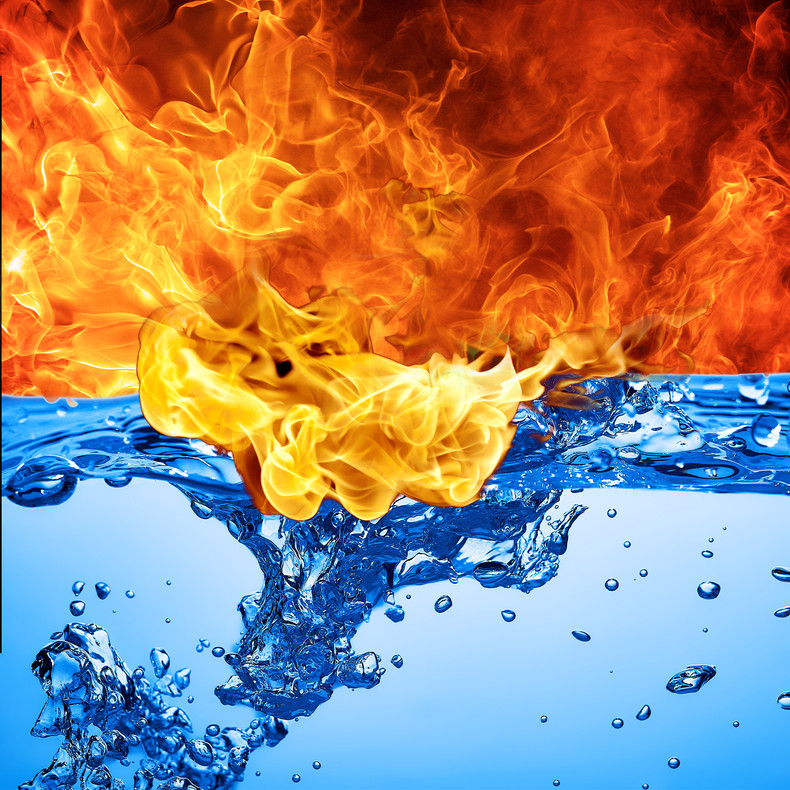Ayurveda has three doshas- Vata, Pitta, and Kapha. These three doshas determine and influence genetically inherited personality and physical traits, natural tendencies, emotions, environment and consequently thoughts and actions that individuals take. These constitutions can change depending on one's emotional, mental, and physical conditions, as well as the season, and the imbalances that can happen.
Pitta Dosha: Pitta is managed and constructed by the energy elements of fire and water. Pitta primarily regulates the body temperature through absorption, assimilation, chemical transformation of food, and supply of nutrition to the body. It also controls the heartbeat, hormone levels, and visual & color perceptions. Pitta is the fire that controls thirst and metabolism in the human body. It promotes appetite and vitality. It is essential to improving skin quality. Pitta governs the digestive system, including the liver.
Five Types of Pitta: Ayurveda mentions five types of Pitta based upon their specific functions.
- Pachaka Pitta: Exists primarily in the intestines and stomach. It governs the digestive system.
- Ranjaka Pitta: Is located in the liver and spleen. Its function is the production of blood.
- Sadhaka Pitta: Resides in the heart. It assists in the maintenance of emotional balance during times of extremely stressful situations.
- Alochaka Pitta: Is located in the retina. It controls vision and color perception.
- Bhrajaka Pitta: Remains in the skin. It is responsible for skin tone and complexion.
Body Structure of Pitta People: People with prominent Pitta are determined, fiery and intense but sometimes stubborn. They are good decision makers and are possessed with a high level of courage, energy, sharp intelligence, strong will-power and are goal-oriented. They enjoy learning new things. They are physically strong with medium-built bodies, both height-wise and weight-wise. They are possessed with delicate, fair, glowing & oily skin. They perspire easily. They have sharp eyesight, sharp chins and noses. They have charismatic, charming and loveable personalities. They often love to participate in competitions. They are born leaders, possess natural leadership qualities and hold leadership positions in various organizations. They are very good speakers and sharp-witted. They can easily gain or lose weight as per their determination. They have a healthy appetite with healthy bowel movements and the right balance of hormones in their bodies.
Imbalanced Pitta Dosha: High intake of alcohol on a frequent basis, and consumption of acidic, fermented, fried, hot, oily, salty and spicy and highly processed foods with high fat and sugar contents are the prime factors causing Pitta imbalance. Use of tobacco in any form also causes Pitta imbalances. High stress levels may also cause Pitta imbalance. Imbalanced Pitta Dosha can create as many as 40 types of ailments, diseases, and disorders in the human body. Imbalanced Pitta leads to aggression, agitation, anger, bruising, frustration, irritation, hypertension, high blood pressure, jaundice, irritability, migraines, regular hiccups, and stress. Anger gets reflected clearly through their eyes.
They suffer from skin problems like acne, rashes, sunburn, sunspots on the skin, and yellowness of skin and nails. They become prone to heart and liver disorders. They also suffer from gastritis, heartburn, heart sensation, indigestion, and ulcers. The problems of acute inflammation in their bodies and particularly in the joints occur mainly due to the imbalance or disorders in Pitta dosha. People with Pitta dosha also suffer from dizziness and fainting. They often have bitter taste in their mouths and feel heat sensations in their throats. Imbalanced Pitta also causes aversion to heat as it makes them feel very uncomfortable.
Balancing Pitta Dosha: Imbalanced Pitta dosha can be cured through certain Yoga Asanas, Home Remedies and Pranayama. To control Pitta dosha, it is advisable to develop qualities of calm, compassion, coolness, and moderation. Body massage and inhaling of cooling scents like that of mint, rose, and lavender are advised.
What to Eat? Consumption of barley, curry leaves, herbal tea, oats and sweet fruits prove to be beneficial. Consumption of balanced whole, freshly cooked foods, with a moderate quantity of any of the qualitative coconut oil, ghee, high quality olive oil, sunflower oil is advisable. Consumption of duly washed fresh raw fruits and vegetables also proves to be beneficial. Use of cardamom and coriander spices in vegetables is recommended. It is ideal to consume dairy products but avoid drinking meals along with the meals. Eat foods that are ‘cooler’ in nature. Have meals in a peaceful environment.
What to Avoid? Avoid the consumption of alcohol, eggplant, egg yolks, hot drinks, hot spicy & oily food, nuts, pickles, potatoes, red meat, sour fruits, and tomatoes as far as possible. It is better to avoid hot temperatures. Meals must NOT be skipped.


